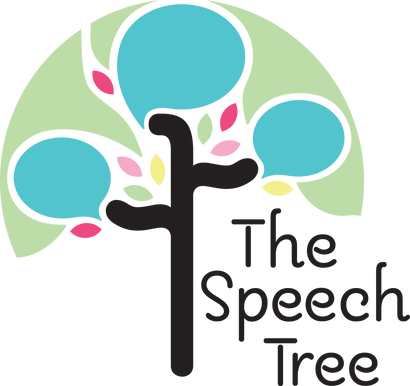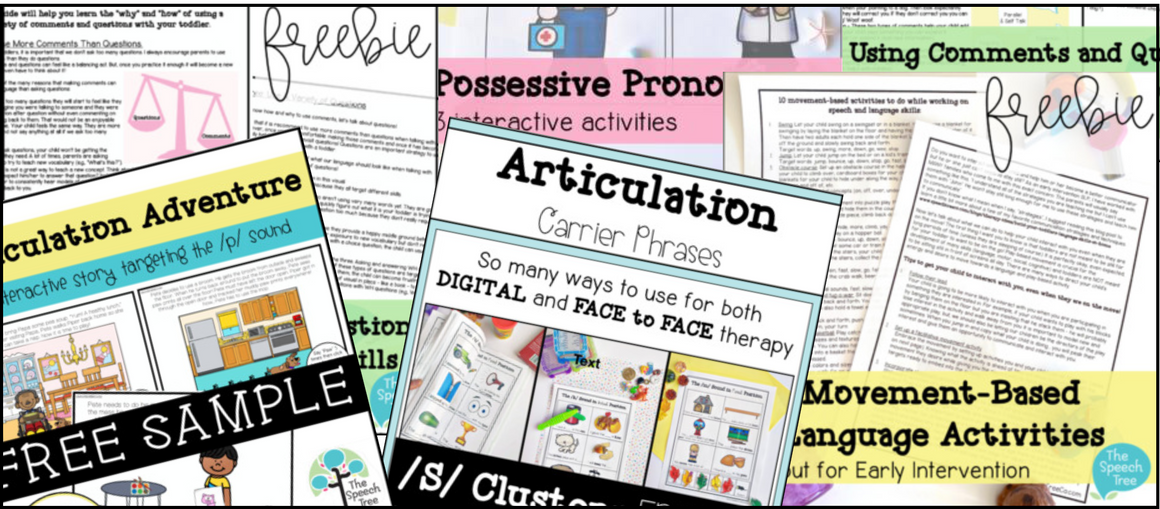How to choose targets and set up your cycle: CYCLES APPROACH FOR PHONOLOGY

You may also enjoy these resources:
Blog: Cycles 101
Product: Comprehensive Cycles Unit
Blog: Inside look at a therapy session with the Cycles Approach
This blog will give you step by step instructions for how to choose targets and set up your cycle for the Cycles Approach for Phonological Patterns. If you need a refresher about what this approach is - be sure to check out this blog: Cycles 101.
![]()
It is important to understand the difference between primary and secondary patterns before choosing targets and setting up your student's cycle.
Primary patterns refer to the patterns you should prioritize in your first cycle. The primary patterns were determined by Barbara Hodson and colleagues through research about which patterns would result in the greatest intelligibility outcomes. Secondary patterns refer to the patterns that are targeted after the primary patterns have started to show up in the child's spontaneous speech.
Primary Patterns:
1. Syllableness: 2-3 syllable, equal stress words. Focus is on getting the child to produce both syllables in the word. Focus is not on accuracy of sounds. For example, the target is “cowboy” and the child says: “cow”. This production would be incorrect. With the same example, the child says: “ow-boy”. This production would be accepted because the child produced both syllables.
2. Singleton Consonants: Initial or final singleton consonants. Initial consonants - choose initial stops, nasals, or glides. Final consonants - choose voiceless stops or nasals.
3. /S/ Clusters: /S/ clusters in initial or final position (st, sp, sk, sm, sn, ts, ps, ks).
4. Anterior-Posterior Contrasts: If the child is fronting, choose final /k/ or initial /k, g/. If the child is backing, choose initial /t,d/ or final /t/. Avoid words that contain both front and back sounds if the child is not stimulable for these words.
5. Liquids: Initial /l/ and /r/. Include this pattern in your cycle even if the child is not stimulable.
Secondary Patterns: Voicing errors, vowel errors, stridency, palatals, other consonant clusters, assimilations.
Once primary patterns reach the designated accuracy criteria, you can begin to add secondary patterns to your cycle OR you can move to a different approach to “tidy up” remaining errors (e.g., minimal pairs).
![]()
How to choose target patterns and phonemes for your students.
Now that we understand the difference between primary and secondary patterns, let's talk about how to choose target patterns and phonemes for your students.
We want to identify phonological patterns that are deficient but STIMULABLE. We can assess the child's speech by performing a single word naming assessment and obtaining a conversational speech sample.
Organize the data from your assessment by making a list of each of the primary patterns that occur 40% of the time or greater in the child's spontaneous speech. These will be the patterns that you include in your first cycle.
Take note of which phonemes and primary patterns were produced accurately/inaccurately during the single word naming test as well as which of these phonemes were stimulable.
Based on this data, you will include all of the PRIMARY patterns in your cycle that occurred 40% of the time or greater AND you will include at least 2 phonemes per pattern in your cycle. You will only choose stimulable phonemes. *I will include an example case study at the end of this blog*
![]()
How to create your cycle:
You now know which patterns and which phonemes you are going to include in your cycle. The duration of the cycle will depend on the number of deficient patterns and number of deficient, stimulable, phonemes per pattern.
Each phoneme within each pattern will be targeted for 60 minutes. You can break this up into multiple sessions if you do not see your student for a full 60 minutes at a time (e.g., 3 20-minute sessions, 2 30-minute sessions). At the end of one hour, you move on to the next phoneme/pattern whether or not the child has mastered it. *I will include an example case study at the end of this blog*
![]()
When to change up the cycle:
You will continue to recycle the patterns until the child has mastered it.
At the end of each cycle (a cycle consists of targeting all chosen patterns and phonemes for 60 minutes each) you will reassess the child's speech as described earlier in this blog.
Remove any patterns that have been mastered from the cycle. Add in any new primary patterns that couldn't be targeted before (Maybe they weren't stimulable before and now they are).
You can also make a decision about adding in any secondary patterns (only if you have removed some mastered, primary patterns). Often times, the child's errors within the secondary patterns will improve on their own while addressing the primary patterns.
Once you have done your re-assessment and established the new cycle, repeat the process of 60 minutes per phoneme per pattern until the cycle is complete again.
Research shows that typically 3-4 cycles (or approximately 30-40 hours) are required for children with severe phonological deficits to become intelligible.
![]()
EXAMPLE:
Cindy presents with the following for each primary pattern:
- Syllableness: Cindy does not produce both syllables in two syllable words consistently in spontaneous speech. Cindy can produce both syllables at the word level with prompts (she is stimulable).
- Singleton consonants: Cindy is omitting several final consonants. Cindy is stimulable for final /m, n, p, t/.
- Anterior/Posterior Contrasts: Cindy consistently uses the pattern of fronting in spontaneous speech. She is stimulable for initial /k,g/. She is not stimulable for final /k/.
- /S/ clusters: Cindy is stimulable for /st/ and /sn/ and produces them with 50% accuracy in spontaneous speech. She is not stimulable. for any other /s/ clusters at this time.
- Liquids: Cindy is not stimulable for initial /l/ or /r/.
An appropriate cycles outline:
-
1. Two syllable words.
2. Final /m/ and final /t/. (Cindy is stimulable for 4 consonants in final position. These two were chosen to promote generalization. One bilabial nasal was chosen and one alveolar stop was chosen with the hope that mastery of these two sounds will generalize to other sounds of that place and manner.)
3. Initial /k/ and /g/.
4. /st/ and /sn/ clusters.
5. Initial /l/ and /r/. (Always address liquids, even if not stimulable)
What would sessions with Cindy look like?:
- Cindy is seen twice a week for 30 minutes each session. Each sound in each pattern must be targeted for 60 minutes before moving on to the next one. So, Cindy will practice “two syllable words” for two sessions, “:final /m/“ for two sessions, “final /t/“ for two sessions, and so on until the cycle is complete. Each session will look something like this:
-
- 2 minutes: amplified auditory bombardment.
- 23 minutes: 2-3 engaging activities designed to promote high trials of the 2-5 selected target words.
- 2 minutes: amplified auditory bombardment.
- 2 minutes: check stimulability for next session’s target words (if moving on to a different sound/pattern) to ensure they are still appropriate for the cycle.
Once the last session in the cycle is complete (in this example that would be initial /r/), the therapist should take data on all sounds/patterns in the cycle to determine if those targets should be repeated once the cycle starts over. Delete any parts of the cycle that have been mastered. Check for any new sounds or patterns that should be added. For example, maybe Cindy is now stimulable for final /k/ or other /s/ clusters that she initially wasn’t stimulable for. You can also make a decision about any secondary patterns that should possibly be added into the cycle.
Do you use the cycles approach with your students? Click the photo below to check out this comprehensive, engaging, and effective cycles unit!
You may also enjoy these resources:
Blog: Cycles 101
Product: Comprehensive Cycles Unit
Blog: Inside look at a therapy session with the Cycles Approach
Leave a comment
Comments will be approved before showing up.





